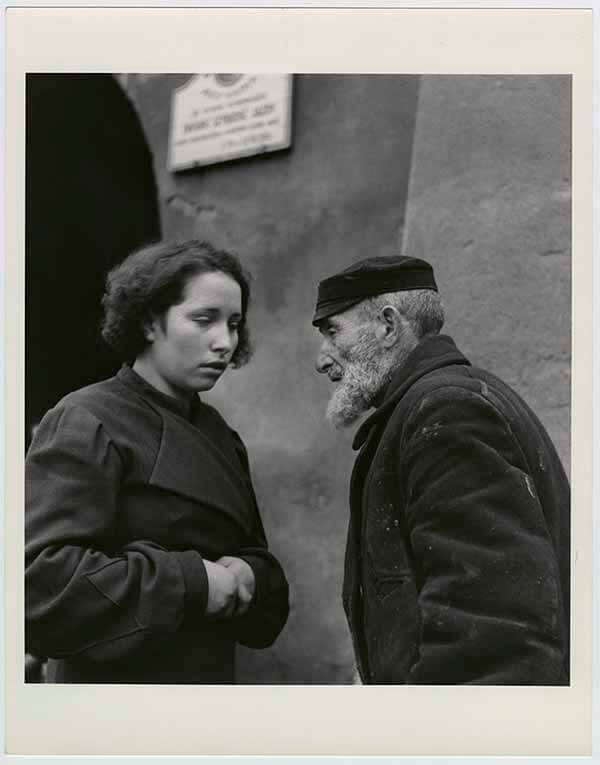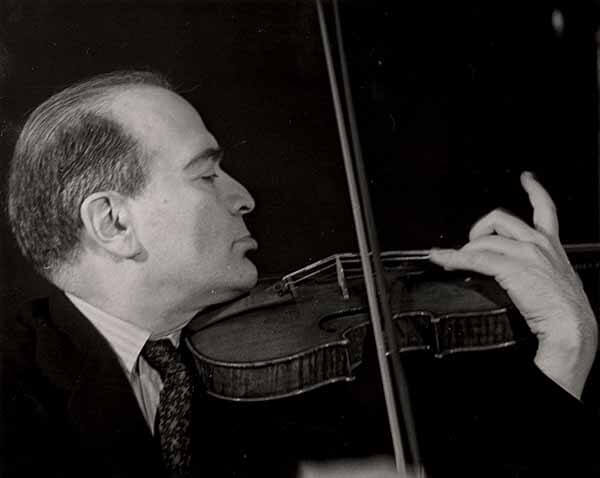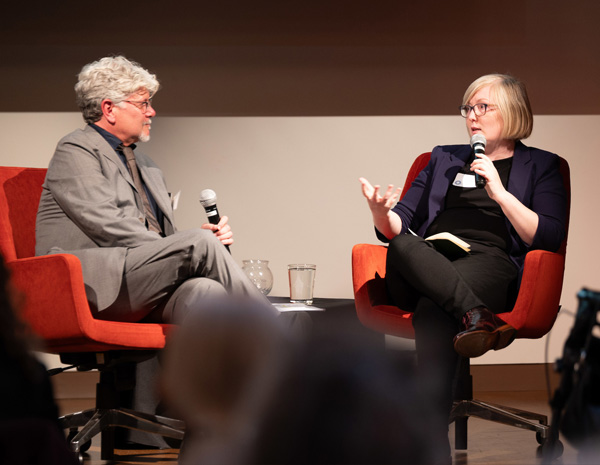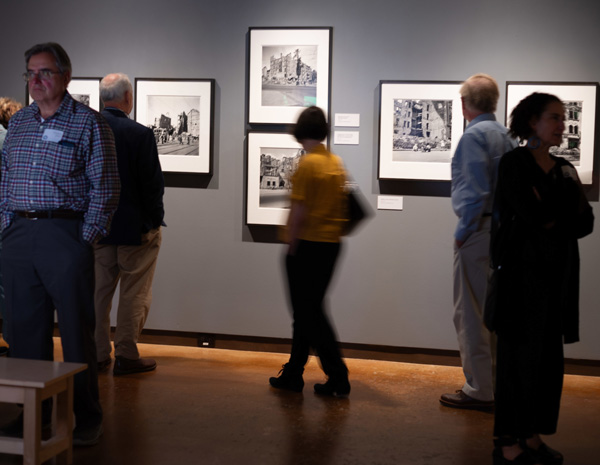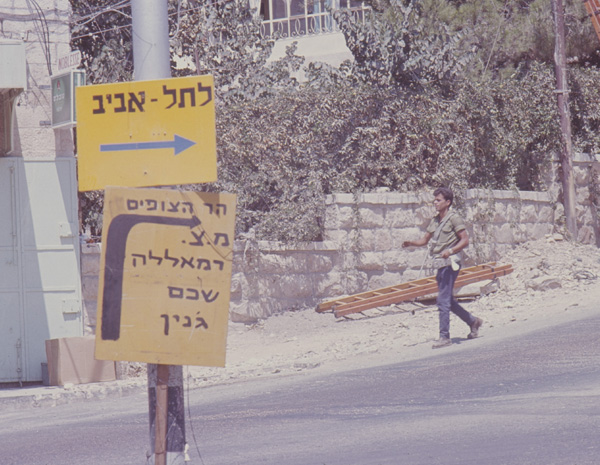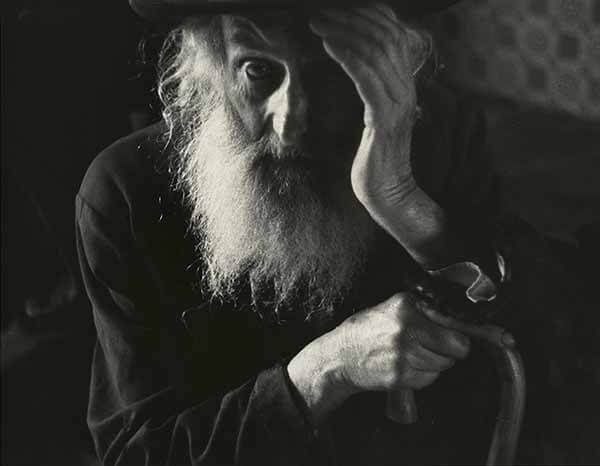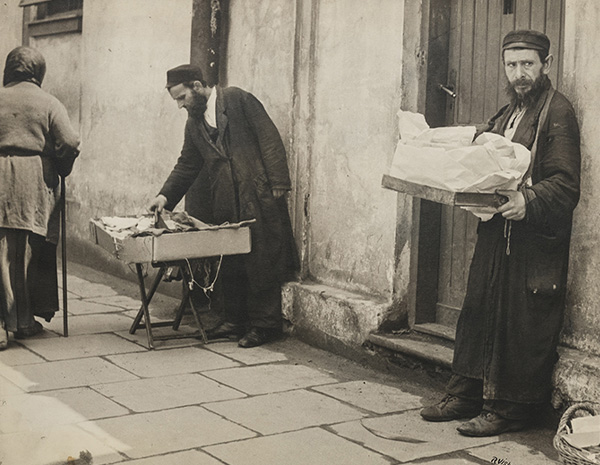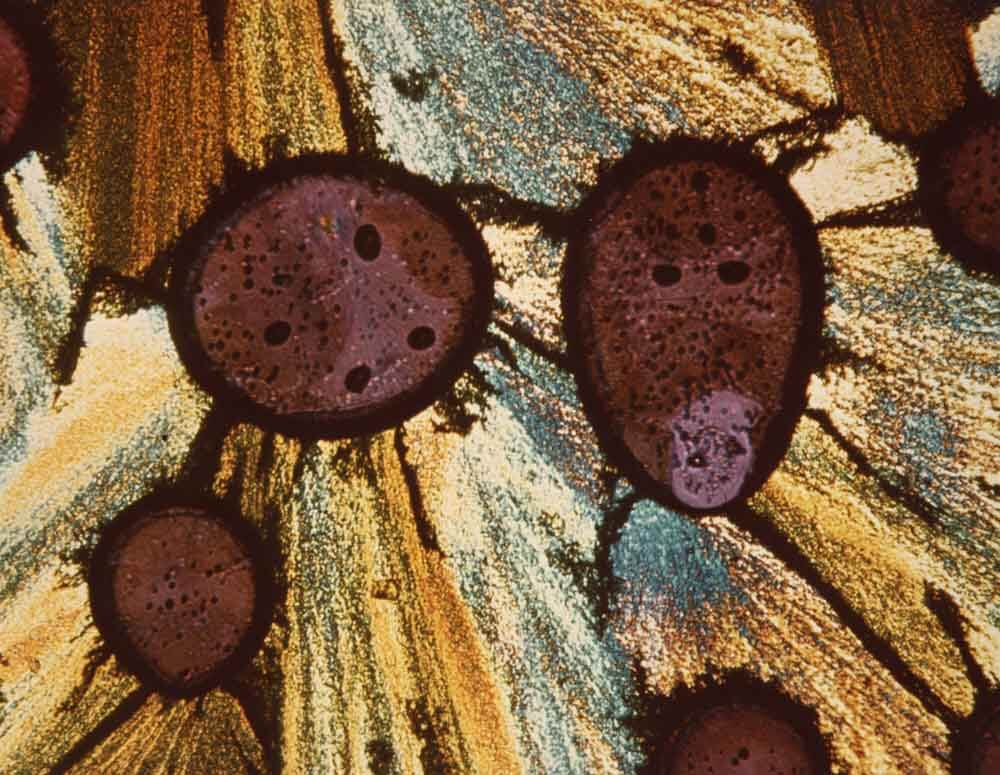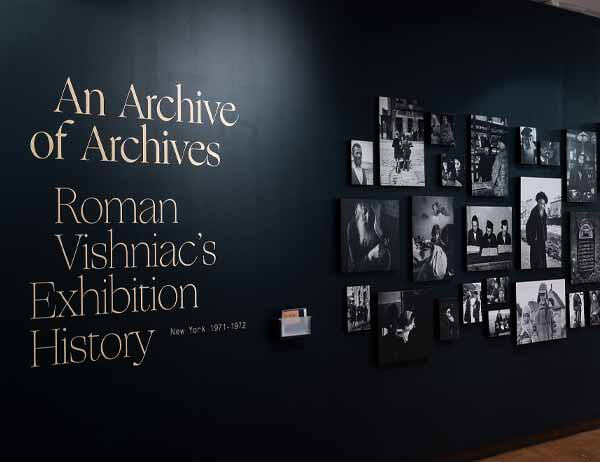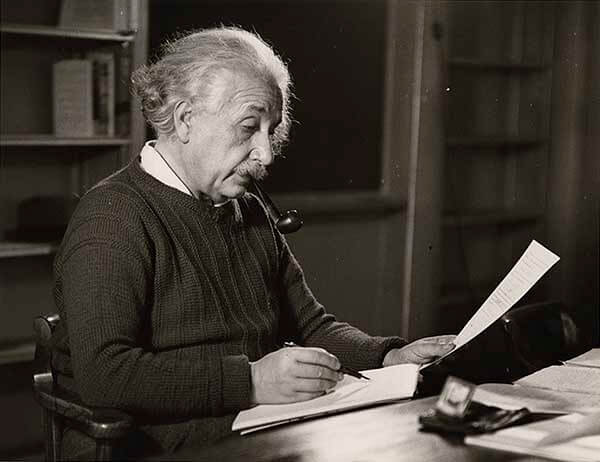Jewish Art
Roman Vishniac Archive
The Magnes Collection is currently processing the Roman Vishniac Archive. Materials from the archive are not yet available.
In 2018, Mara Vishniac Kohn donated the life work of her father, the renowned photographer Roman Vishniac, to The Magnes Collection at the University of California, Berkeley. With over 30,000 images, audiovisual materials, correspondence, and memorabilia, the gift is the largest donation The Magnes Collection has yet received and the third most valuable gifted collection ever received by the University of California, Berkeley.
Roman Vishniac (1897–1990) was inseparable from his camera. The technology and art of modern photography made visual imagery the most popular and powerful medium of the 20th century, and Vishniac’s work spanned the greatest decades of photography. Born into a bourgeois Jewish family near St. Petersburg and raised and educated in Moscow, Vishniac was a versatile photographer, an accomplished biologist, an art collector, and a teacher of art history. He also made significant scientific contributions.
As a young professional, Vishniac lived in interwar Berlin, then a major center of photography and home to a rich artistic culture. His images from the 1930s reflect the era’s melding of social realism and artistic influences. Vishniac captured photographs of Jews and Jewish life in the immediate prewar years, using an innovative technique of multiple rapid shots made possible by the new 35mm film technology. He captured the drama of the moment, the person, or the event from multiple perspectives that allowed him to manipulate the images and heighten the realism into both propaganda and art.
Through his work, Vishniac provided texture and context to the experience of Jewish migration while also offering insights into universal human themes. His most celebrated photographs, portraying the plight of marginalized Jewish communities in Poland, Ukraine, and Czechoslovakia during the late 1930s, were collected for the American Jewish Joint Distribution Committee to raise awareness and relief funds among American Jews. In unforgettably vivid images he captured the humanity, the poignancy, and the hope that is both individual and collective. These images became emblematic of a lost Eastern European Jewish past.
Vishniac’s contribution to Jewish memory, however, goes far beyond the best-known images, which are only a small part of his much larger lifetime oeuvre given to the Magnes. The archive contains thousands of photographs on subjects ranging from street life in Europe’s capitals during the rise of Fascist regimes, to immigrant and disenfranchised communities in New York City in the 1940s, to studio portraiture of eminent 20th-century intellectuals and artists. His photographs also document the land and Jews of Israel in the wake of the Six Day War (1967), and include remarkable scientific and nature photography spanning decades and including cutting-edge microphotography.
Photograph [2016-6-1]: [Violinist Bronislaw Huberman, New York] ca. 1941-45, Roman Vishniac. The Magnes Collection of Jewish Art and Life. Gift of Mara Vishniac Kohn.
The Roman Vishniac Archive at The Magnes embodies the essence of a museum of material culture. It is perfectly suited to expressing The Magnes’ commitment to reexamine the intersections of change on the map of Jewish migrations, traditions, and culture over time and around the world.
Prior to the family’s gift to The Magnes, Vishniac’s work was the subject of an excellent exhibition and publication project (Roman Vishniac Rediscovered, 2013-2015) at the International Center for Photography in New York. Though digitization and cataloging work supported it, the materials had not been treated holistically, nor systematically tallied and organized. The Magnes’ effort marks the first time that the materials are being managed as a single and comprehensive collection forming an archive, rather than a source for specific (and, by necessity, selective) projects such as exhibitions, publications, and websites.
After carefully moving the materials from the East Coast, where they had been stored for the last decade, the laborious, yet exciting, unpacking of boxes, collating, and assigning of codes was an essential first step and an introduction to the richness of a collection encompassing almost 35,000 items, including over 30,000 individual images.
The addition of the Roman Vishniac Archive to a world-class Jewish collection embedded within a premier public university provides The Magnes with an unprecedented opportunity to become a major center for research, exhibitions, education, and public programming about migration, especially Jewish migration, in the 20th century.
The Magnes is a museum, a center for research, and an archive of material that sustains the remembrance of turbulence and migration that marked Jewish culture and traditions in the 20th century. It raises questions about the very definition of cultural identity and heritage in today’s time of fluctuating borders and identities. The Vishniac Archive is the legacy of a world-renowned photographer, in a critical period of Jewish history, residing in an innovative museum located at a first-class research university.

